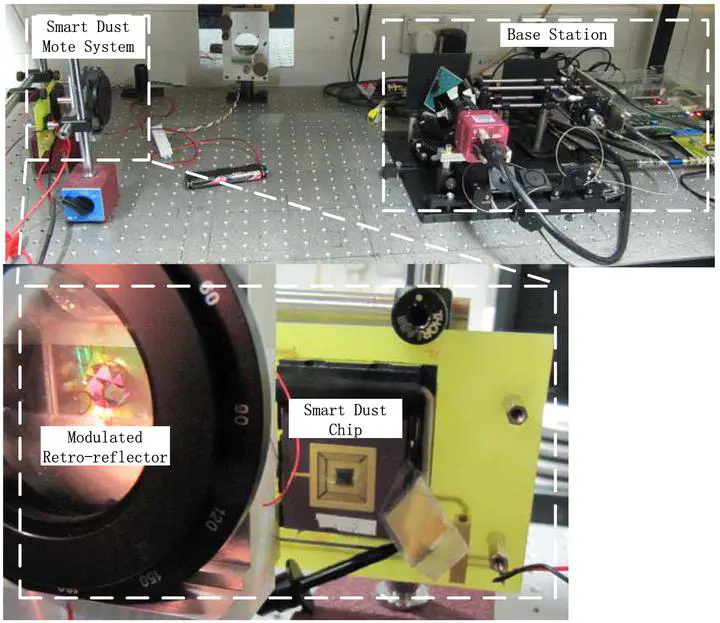An Optical Transceiver Powered by On-Chip Solar Cells for IoT Smart Dusts With Optical Wireless Communications

Abstract
Using optical communications for smart dust applications enables small size of transceivers and offers a potentially large power advantage over RF. This paper presents an optically powered transceiver, which consists of on-chip solar cells, an optical receiver, a storage capacitor, and a passive transmitter formed by a liquid crystal ( LC ) modulator and a modulated retro-reflector (MRR). The transceiver circuit system has been fabricated using a standard 0.18-μm CMOS process and the circuit area is 1×1.7 mm^2 excluding the MRR. Measurement results show that the complete transceiver can successfully work for 1 kb/s downlink and 10 b/s uplink under 0.5 V voltage supply and consume 53 nA totally. This indicates the transceiver can work at least in a 10 m range. It is successfully demonstrated that the transceiver scavenged the power from a 670 nm modulated laser beam sent by a base station (BS), extracted clock signal and the encoded data from the beam, decoded two designed instructions, switched the LC in the MRR and sent responses back to the BS. To the author’s best knowledge, this is the first time to present that an on-chip solar-cell powered transceiver realizes the two-way optical wireless communications for Internet of Things applications.